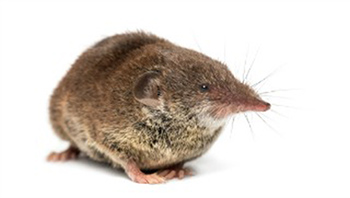Moles, Voles, and Shrews - Do You Know the Differences?
By Bill Willis and Bill Steinmetz
December 12, 2017
If you garden, then you may have experienced the feeling of having moles or voles underfoot, even during winter months. These critters are very common in North Carolina, and they enjoy a good landscape with lots of flora and fauna as much as we do. At some point, as a gardener, you will likely ask the question: "What is happening to my lawn?"
How do you know if it’s Moles, Voles, or Shrews?
If you are fortunate to have a cat or dog who shares their kills with you, then that will help immensely with identification. However, much can be deduced by the animal’s use of the landscape (see slideshow photos).

(Photo courtesy of thespruce.com)
Moles:
- Moles have a pointed snout, as well as eyes and ears so tiny that they are not visible.
- Moles have enlarged front feet used for digging.
- Moles live underground in tunnels or runs that can produce raised ridges in lawns.
- They form hills or mounds, creating uneven walking and mowing hazards.
- Moles are solitary predators that aggressively defend their territory.
- Moles primarily feed on earthworms, grubs, beetles and other animals or arthropods found in soil.

(Photo courtesy of flickr)
Voles:
- Voles have rounded ears and face, with a short tail.
- Voles have reddish brown and black bodies with a gray underside.
- Voles prefer to live in low-lying or creeping vegetation and make trails through the grass or snow.
- Voles are primarily herbivores and will feed on the roots, bulbs, bark and seeds of many ornamental plants and grasses.
- Voles make several exit holes in flower beds and lawns.
Shrews:
- Shrews have a pointed snout, with smaller front feet.

Shrew: Examples of shrews, which will often reuse tunnels of voles and moles.
(Photo courtesy of JC Ehrlich) - Shrews' eyes are tiny, but visible in most species
- Shrews have many habitats, depending on the species
- Shrews will reuse the tunnels made by moles and voles and will also occasionally invade buildings.
- Shrews feed on insects, earthworms, slugs, small animals, seeds and roots, and eat constantly due to very high metabolism.
These three animals are part of the ecosystem. Before making a mountain out of a molehill, consider just why these notorious three may be sharing your landscape. Remove debris and food sources, employ good culture practices, mow regularly, and plow to disrupt tunnels, and you may see them move onto another neighbor’s lawn in search of food and a more hospitable habitat. Use more aggressive practices like trapping and baiting as last resorts.
Thanks to JC Ehrilich for providing many of these facts.







